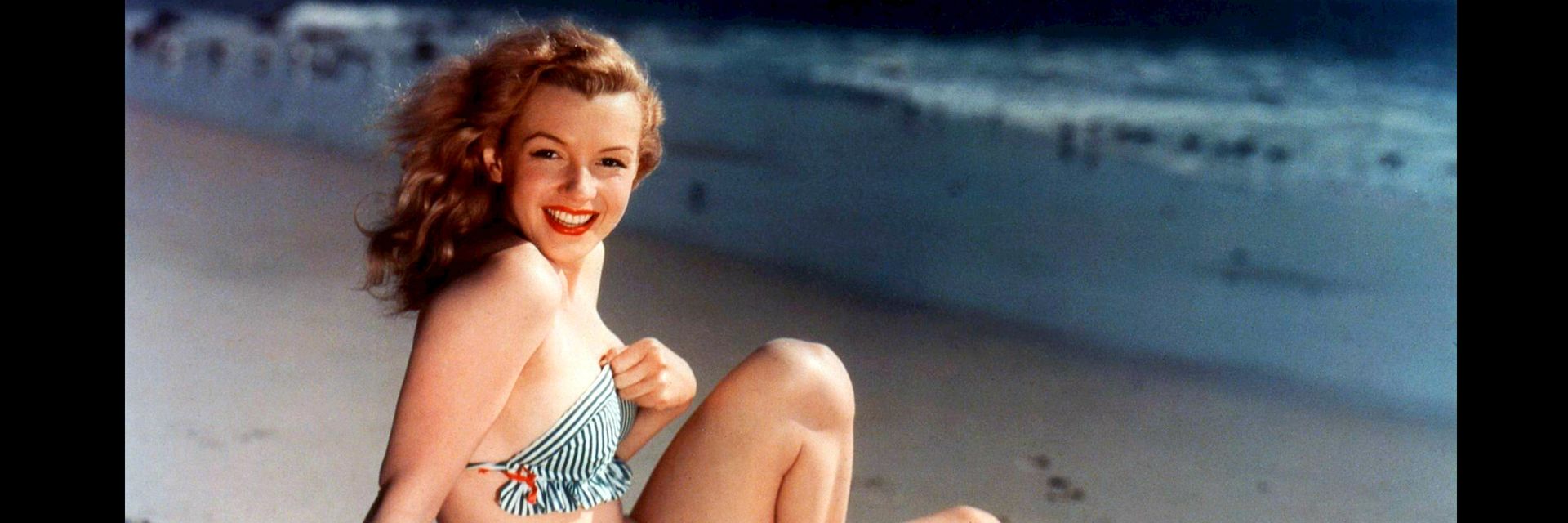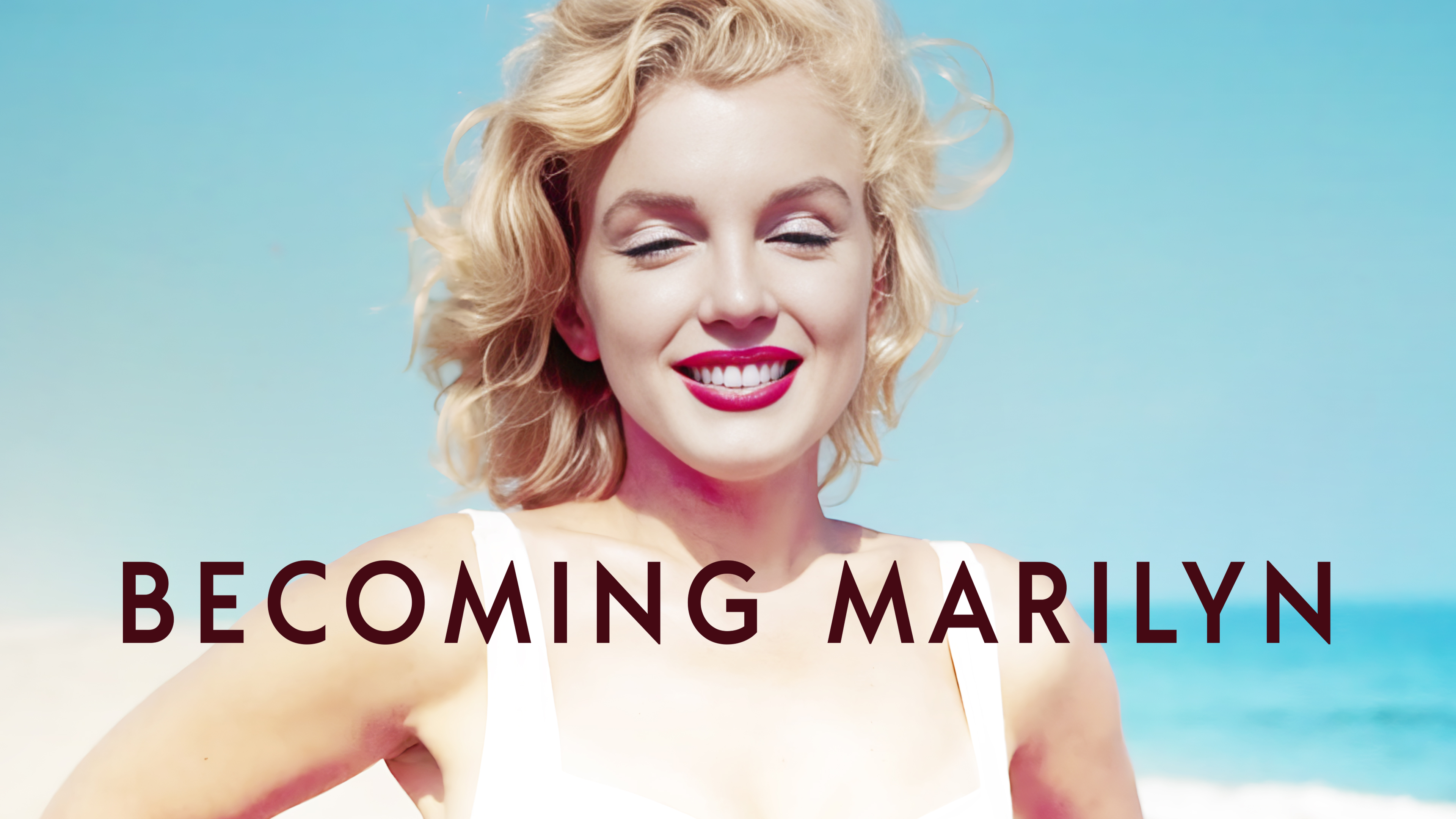Some gay men have adopted the image of Marilyn Monroe as their patron saint. But behind the image runs a line of pathos even more irresistible to the legions of Marilyn’s gay fans.
◊
Marilyn Monroe. So many associations arise when we consider the figure behind this well-known name. She was Hollywood royalty, reigning as queen of classic Hollywood glamour. Timeless sex symbol, blonde bombshell. Slayer of men’s hearts, from the average Joe watching her films to baseball legend Joe DiMaggio, movie moguls, incandescent stars, and a president of the United States. Effervescent comedienne, winking her way to self-knowledge and a hidden wisdom that eluded many who claimed to know her and love her.
Beneath the baggage of her freighted name lay a woman beleaguered by shadows that trailed her from a fractured childhood into the glaring lights of fame. Cast adrift early in life, Marilyn Monroe – born more prosaically as Norma Jeane Mortenson – navigated a turbulent sea of foster homes and orphanages, a journey that imprinted her with a lifelong quest for love and stability. Monroe’s beauty became her sail and her anchor, drawing her into the treacherous waters of Hollywood, where she was too often seen as little more than a prize to be claimed. This led to marriages that promised shelter but instead added layers of betrayal and abandonment, leaving her heart more fractured with each dissolution.
See how Norma Jeane Mortenson evolved into the icon Marilyn Monroe in MagellanTV's Becoming Marilyn.
Behind the luminescent glow of the screen, Monroe faced the dark underbelly of fame: exploitation, manipulation, and sexual assaults that were swept under the plush carpets of studio power corridors. Her relationships, painted in public view as fairy-tale romances, were, in reality, often complicated entanglements. Despite her radiant on-screen presence, she battled inner demons, grappling with anxiety, depression, and a dependence on pills that promised respite from her insomnia and insecurities but instead ensnared her in a cycle of addiction.
The stark contrast between her public persona as a dazzling icon of beauty and sexuality and her private struggles underscores a narrative far removed from the glittering façade of Hollywood’s golden era. Monroe’s life story is a poignant reminder of the human behind the celebrity: a woman who desperately sought the ability to chart her own path in a world that decidedly valued her more as a commodity than as a person.
Though this aspect of Marilyn’s life story is relatively well-known today, it took a special fanbase with an empathy for lost souls and reinvented personas to ferret this out in the years before such candor became common in assessing Hollywood celebrities. Gay men were the natural carriers of this special empathy and, for decades, held a special devotion to – idolization of – a Marilyn who possessed much more depth than the figure promoted by P.R. flacks in the 1950s and ’60s. And as we’ll see, the star held her gay friends and fans in high esteem as well.
Gay Men and the Pathos of Marilyn
I have to start by stipulating that not all gay men feel this special kinship with Marilyn, or with any female celebrity. But among those of us who do, there is a long history of idol worship. In my own queer life, there was Judy Garland above all, radiating a winsome smile that in later years would reveal the ravages of drugs and hard living. We gay men were down for that. We ate up the stark contrast between the “Dorothy Gale” of The Wizard of Oz and the figure who stammered onstage, stumbled to the mic, and yet still melted our hearts.
And we had that same relationship with Marilyn, who plucked the strings of our hearts with her quavering serenade to her paramour, singing “Happy Birthday, Mr. President” at a ceremony in New York’s Madison Square Garden, and then tore our hearts out when we witnessed her sheet-shrouded body being wheeled out of her casita in Brentwood, a ritzy suburb of Los Angeles.
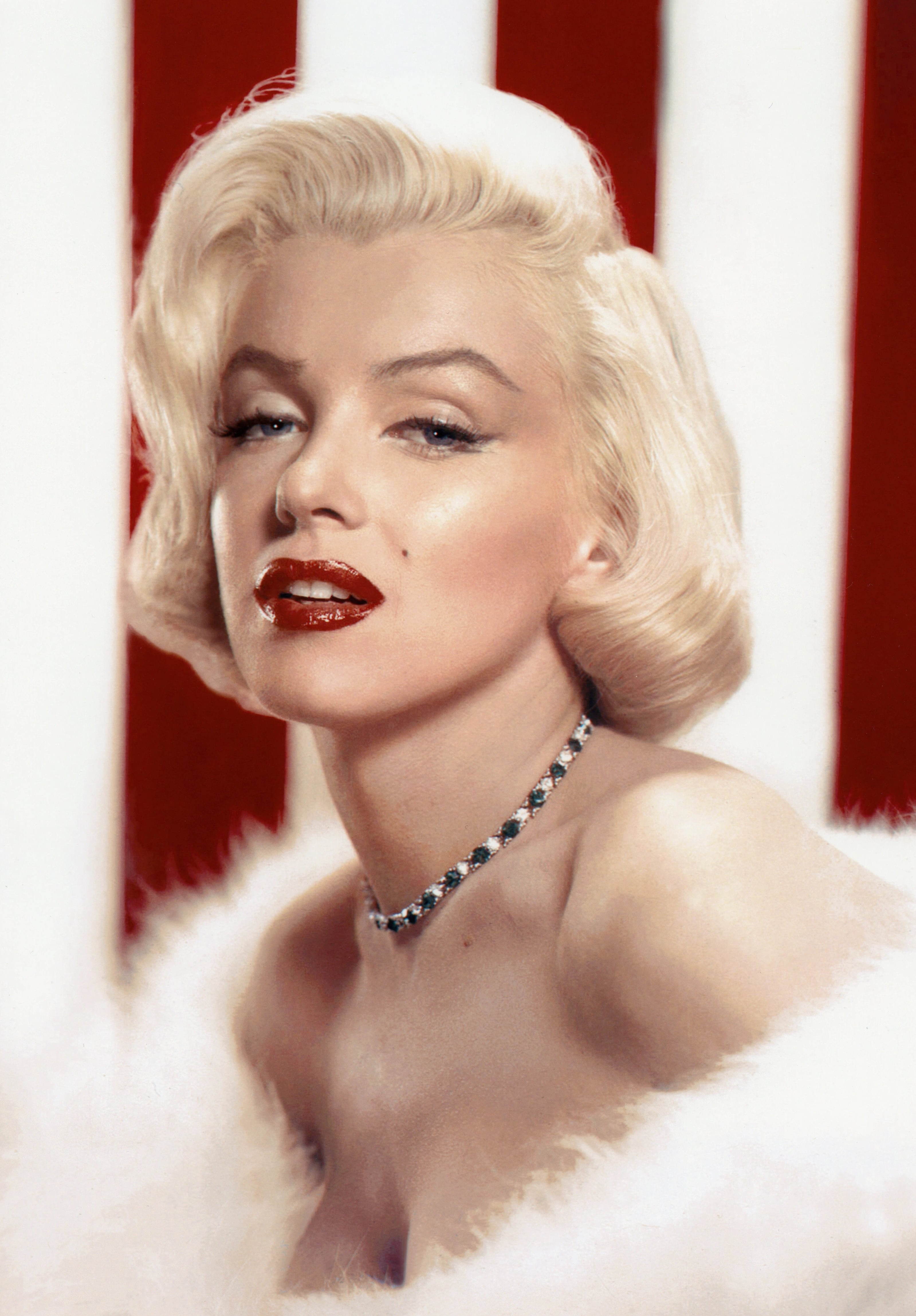
The image of Marilyn Monroe appealed to all, but held a special connection with her LGBTQ+ fans. (Source: Public domain, December 1953 cover of Photoplay magazine, via Wikimedia Commons)
Female celebrity worship still persists today among certain groups of gay men. Now, however, rather than emoting along with the pathos, there is a sense of celebration and pride in big-personality stars like Madonna, Lady Gaga, Kylie Minogue, Rihanna, and others.
This idolization is complex. It’s a phenomenon that reflects a rich tapestry of social, psychological, and cultural influences. The dynamic is deeply rooted in the empowerment and representation these figures offer. Artists like Cher, Madonna, Bette Midler, and Lady Gaga embody resilience and defiance against societal norms, often conveying themes of self-expression, liberation, and overcoming adversity through their work. For many gay men, who may navigate marginalization and discrimination, these messages resonate profoundly, providing inspiration and a model for success despite the odds stacked against them.
Queer Identification with Women Performers
A pivotal aspect of this idolization stems from a deep identification with the struggles such women as Marilyn and Judy faced. Even Britney Spears is as well-known now for her family struggles as for her music. (Remember “Leave Britney Alone” and #FreeBritney?) Their narratives highlight personal and professional battles, including challenges with mental health and societal acceptance.
For many gay men, their idols’ stories mirror their own experiences with identity, acceptance, and equality, making the artists’ perseverance a source of inspiration and solidarity. The glamour and theatricality associated with these stars, Marilyn prime among them, also play a significant role, offering escapism and a reprieve from the mundane. The extravagance and boundary-pushing performances of superstars like Madonna and Lady Gaga not only entertain but also provide a template for self-expression that defies traditional masculinity.
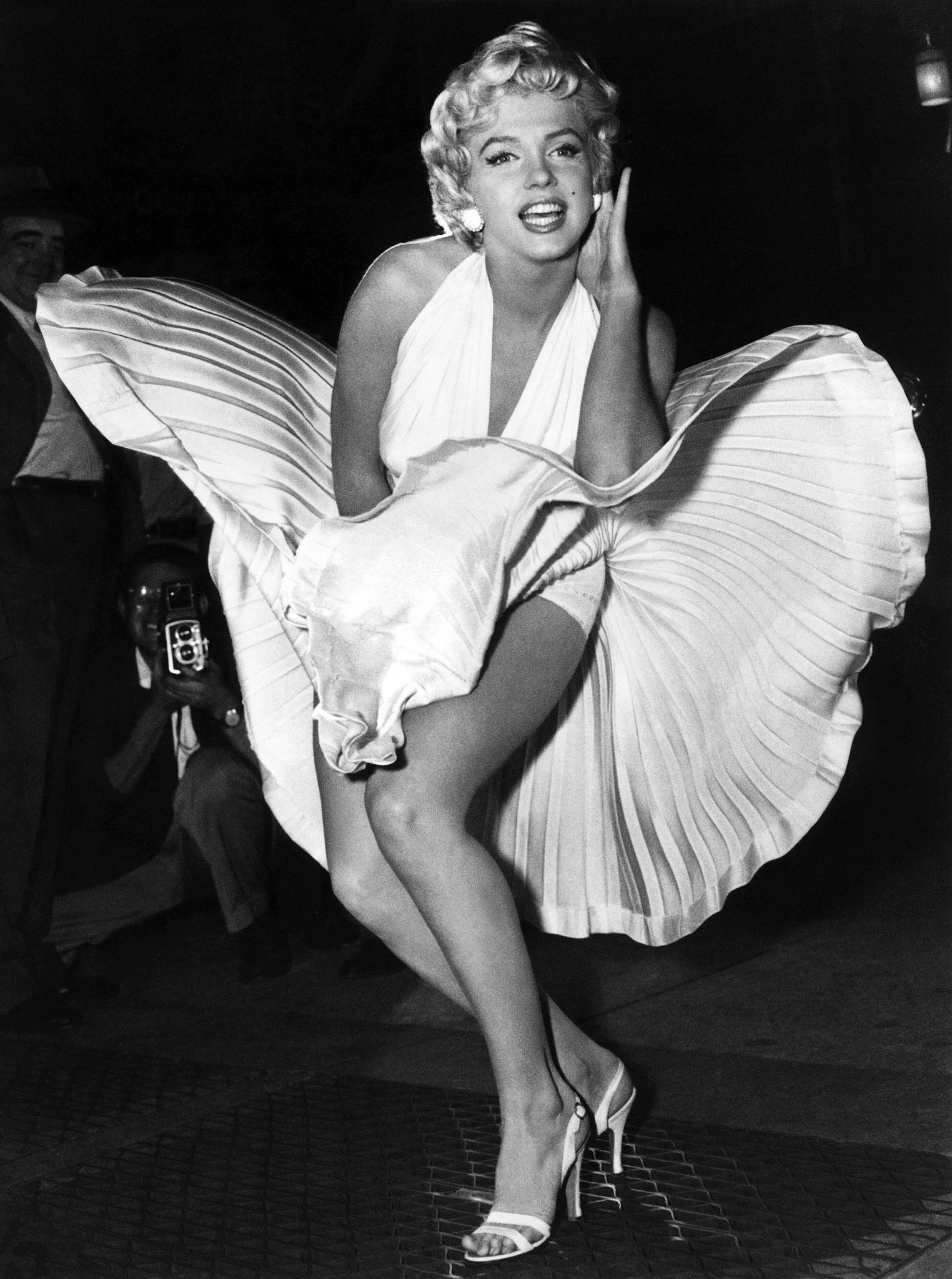
Marilyn Monroe in The Seven Year Itch, dress by William Travilla (Source: No evidence of original copyright, from Newspapers.com, via Wikimedia Commons)
Moreover, the camp sensibility and queer aesthetics embraced by many of these artists resonate with gay men, celebrating the exaggerated, the theatrical, and the humorous in ways that challenge conventional gender and sexuality norms. This affinity helps foster a sense of community and belonging, as admiration for these figures becomes a collective experience that unites individuals across diverse backgrounds. Shared cultural touchstones and moments related to these stars strengthen the bonds within the LGBTQ+ community, especially among gay men, creating a sense of unity and shared identity.
And the empowerment, struggle, camp sensibility, and sense of community these female celebrities inspire offer insight into why they hold such a special place in the hearts of many gay men and their allies.
Catharsis and Psychological Well-Being: The Special Hold Women Performers Have on Gay Men
The veneration of female celebrities like Marilyn Monroe among gay men is a profound psychological phenomenon that holds immense benefits for the queer community. Moreover, the glamour and timeless allure of these divas serve as beacons of hope and inspiration, encouraging gay men to embrace their own uniqueness and authenticity.
“A sex symbol becomes a thing. I just hate to be a thing.”—Marilyn Monroe, interview in LIFE magazine, August 1962.
Through the lens of camp sensibility and audience identification, figures like Beyoncé and Lady Gaga offer a playful escape from societal norms, allowing gay men to revel in their creativity and individuality without fear of judgment. Additionally, the sense of community that forms around the shared appreciation of these iconic women provides a supportive network where gay men can find acceptance, solidarity, and belonging.
The bond formed around the admiration of notable women transcends mere fandom for LGBTQ+ audiences, and in particular gay men. It becomes a catalyst for personal growth, mutual support, and collective empowerment within the gay community. This network of solidarity and belonging offers a foundation for resilience and pride, underscoring the importance of representation, visibility, and the power of cultural icons to inspire and unite.
Marilyn and Her Gay Community
Marilyn Monroe was not only a hot commodity among her LGBTQ+ fans of the day, she was also far ahead of the curve in terms of supporting dignity and respect for queer people. She had gay men and lesbians in her retinue and among her closest circle of friends. One, for example, was Montgomery Clift. Known to Marilyn as “Monty,” Clift was gay in a very hostile Hollywood cultural environment of ‘enforced heterosexuality.’
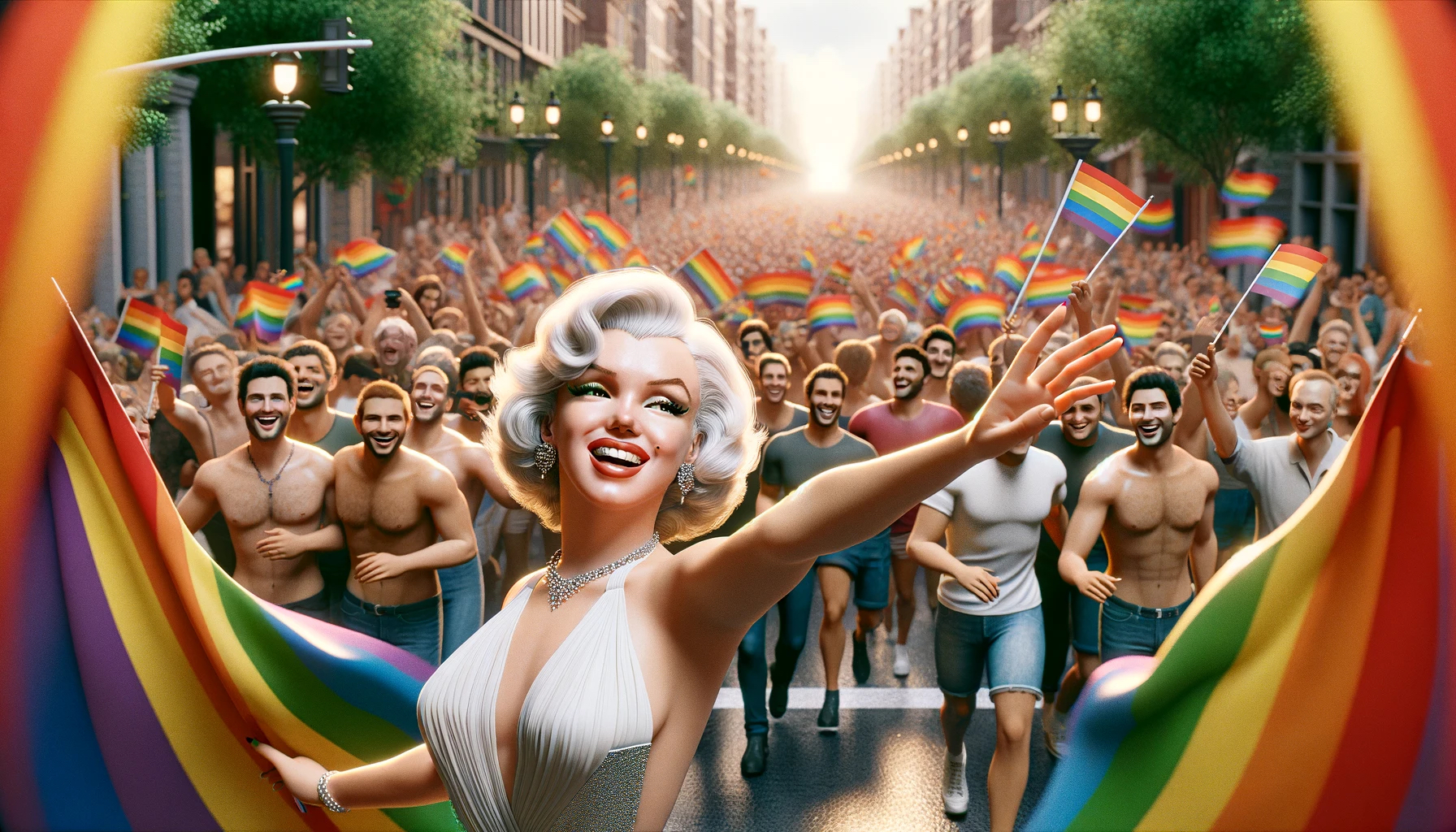
Marilyn Monroe supported the gay community and, in turn, the community elevated her to the position of a gay icon. (Image created using DALL-E.)
Monroe loved Monty unequivocally and supported him vocally. In a 1960 interview recounted in the book Conversations with Marilyn, she defends Clift: “People who aren’t fit to open the door for him sneer at his homosexuality. What do they know about it? Labels – people love putting labels on each other. Then they feel safe. People tried to make me into a lesbian. I laughed. No sex is wrong if there’s love in it.”
She also counted among her intimates the lesbian president of her fan club, Jane Lawrence. In a conversation with Lawrence found in the book Marilyn Monroe: My Little Secret, Monroe is quoted as saying, “When two people love each other, who cares what color or flavor or religion they are? It’s two human beings. It’s beautiful. Love is beautiful. It’s that simple.”
The film star was also surrounded by business associates, advisers, and associated helpers who were gay. One such friend was William Travilla, a costume designer who was among Monroe’s closest professional collaborators. He designed some of her most iconic looks, including the white dress from The Seven Year Itch.
Given what we now know about film legend Marilyn Monroe and her life on and off the screen, is it any wonder discerning gay men cherish and sustain her memory? She not only fueled heterosexual fantasies of sex and desire, she also filled the imaginations of countless adoring gay fans, who I contend were the ultimate beneficiaries of her luminous and legendary life and style.
Ω
Kevin J. Martin is Senior Writer and Associate Editor for MagellanTV. Having long been a journalist and communications specialist, he writes on various topics, including Art and Culture, Current History, and Space and Astronomy. He is the co-editor of My Body Is Paper: Stories and Poems by Gil Cuadros (forthcoming from City Lights). He resides in Glendale, California.
Title Image: Norma Jeane Mortenson/Marilyn Monroe at the beach, Public Domain, via Wikimedia Commons
